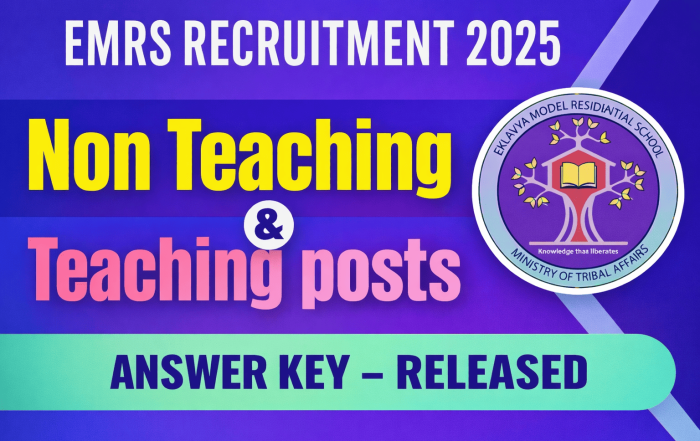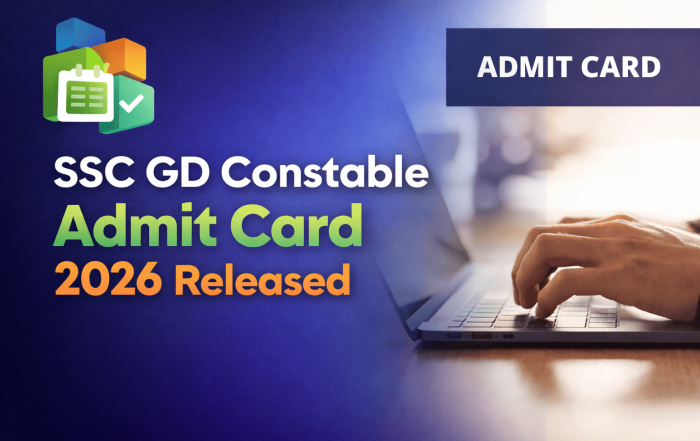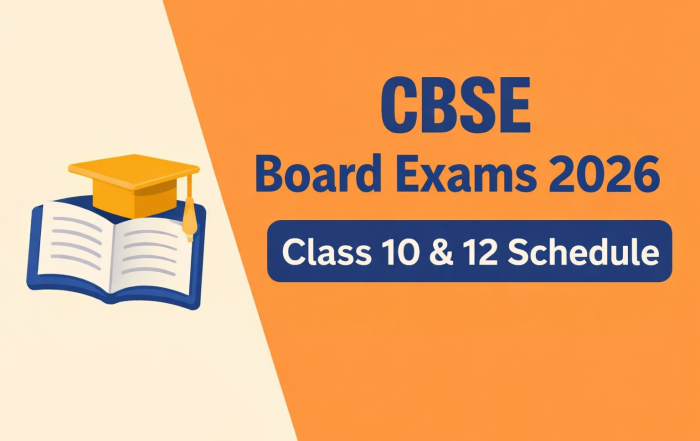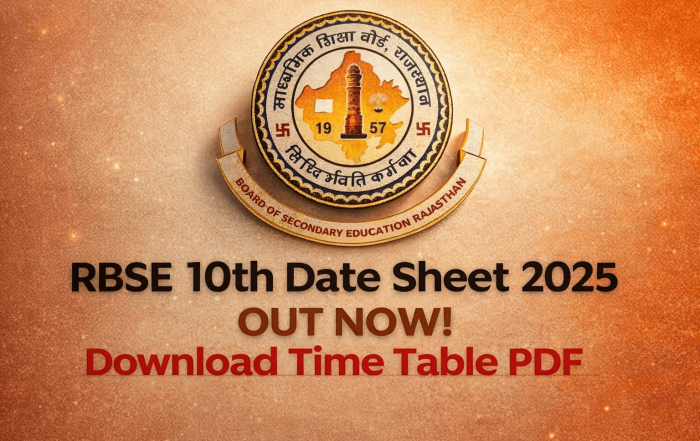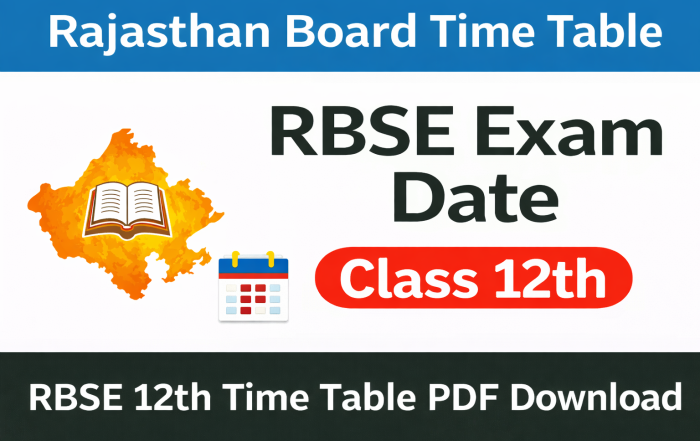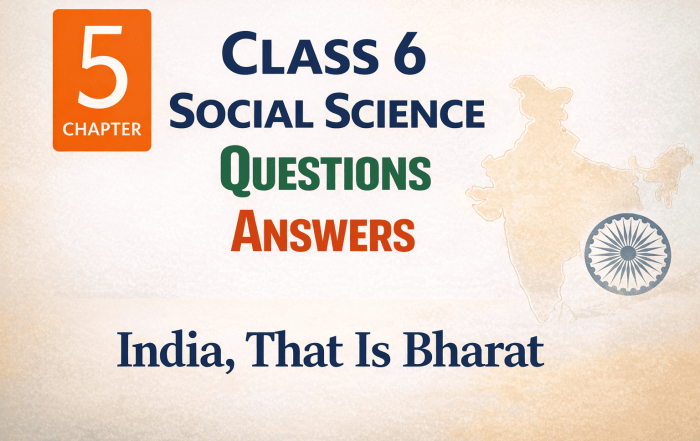RECENT POSTS
EMRS Teaching & Non-Teaching Answer Key 2025
EMRS Teaching & Non-Teaching Answer Key 2025 – Official Update Eklavya Model Residential School under NESTS has officially released the EMRS Teaching & Non-Teaching Answer Key 2025 on 5 January 2026. Candidates who appeared for [...]
CAT Result 2025 Declared: Download Scorecard & Check Percentile
CAT Result 2025 Declared: Download Scorecard & Check Percentile 🎯 The CAT Result 2025 has been officially declared by IIM Kozhikode on 24 December 2025. Candidates who appeared for the exam can now download their [...]
SSC GD Constable Admit Card 2026 – Latest Update
📝 SSC GD Constable Admit Card 2026 – Latest Update The SSC GD Constable Admit Card 2026 will be released online in February 2026, approximately 4 days before the exam, on the official SSC website. [...]
CBSE Class 10 & 12 Date Sheet 2026 (Exam Schedule)
CBSE Class 10 & 12 Date Sheet 2026 – Complete Details The Central Board of Secondary Education (CBSE) has officially released the CBSE Class 10 and Class 12 Date Sheet 2026 for the upcoming board [...]
NTA UGC NET JRF December 2025 Admit Card
🎓 NTA UGC NET JRF December 2025 Admit Card – Latest News The NTA UGC NET JRF December 2025 Admit Card has been officially released on 28 December 2025 by the National Testing Agency (NTA). [...]
RBSE Class 10 Exam Time Table 2026
RBSE Class 10 Exam Time Table 2026 The Rajasthan Board of Secondary Education (RBSE) has officially released the RBSE Class 10 Exam Time Table 2026 for students appearing in the Secondary Examination. This announcement is [...]
RBSE Class 12 Time Table 2026 Released
RBSE Class 12 Time Table 2026 Released The Rajasthan Board of Secondary Education (RBSE) has officially released the RBSE Class 12 Time Table 2026. As a result, students appearing for the Senior Secondary board examination [...]
KVS NVS Admit Card 2026: Exam Date, City Slip & Download Link
KVS NVS Teaching & Non-Teaching Admit Card 2026 – Complete Guide The Kendriya Vidyalaya Sangathan (KVS) and Navodaya Vidyalaya Samiti (NVS) will soon conduct the Teaching and Non-Teaching Recruitment Examination 2026 for 15,762 vacancies across [...]
NCERT Class 6 History Chapter 5: India, That Is Bharat
NCERT Solutions for Class 6 Social Science Chapter 5 – India, That is Bharat NCERT Solutions for Class 6 Social Science History Chapter 5 – India, That is Bharat help students clearly understand how India [...]
NTA UGC NET JRF December 2025 Admit Card & Exam Dates
NTA UGC NET JRF December 2025 Admit Card: Latest Update The National Testing Agency (NTA) will conduct the UGC NET December 2025 examination for Assistant Professor and Junior Research Fellowship (JRF). As per the official [...]

